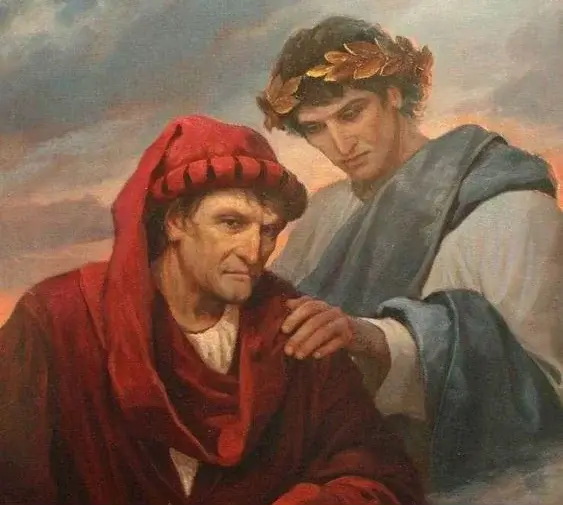Welcome to “Quotes Dante’s Inferno,” where we journey through time to rediscover the profound wisdom embedded in the verses of Dante Alighieri’s timeless masterpiece. Here, we’ll explore the most impactful “Quotes Dante’s Inferno” has to offer, illuminating the shadows of the human condition with the light of classic literature.
Dante’s Inferno Overview

Embark on an exhilarating journey through Dante’s Inferno, a masterpiece segment of the Divine Comedy. Penned by the illustrious Dante Alighieri, this epic poem will transport you into the depths of Hell. Imagine yourself trailing the footsteps of Dante as he navigates the sinister yet fascinating circles of the underworld.
As the narrative unfolds, you find Dante lost in a dark wood, symbolizing your own experiences with sin and moral confusion. But fear not! The Roman poet Virgil emerges to guide Dante—and you—on an allegorical trip that you’ll never forget. Each canto, a term denoting the sections of the poem, is a step deeper into the Inferno, revealing the consequences of earthly vices.
Your spiritual journey doesn’t end with mere observation. Each circle of Hell embodies a category of sin, from the gluttonous to the treacherous, and portrays sinners receiving their due punishments. Witness the poetic justice meted out to souls based on Dante’s interpretation of divine retribution.
| Circle | Sin | Punishment |
|---|---|---|
| 1 | Limbo | Eternity without God in a noble castle |
| 2 | Lust | Buffeted by strong winds |
| 3 | Gluttony | Pelted by foul weather and mire |
| … | … | … |
Inferno’s vivid imagery and allegorical depth not only grip your imagination but also prompt introspection on your own morals. Accompany Dante as he learns to recognize and reject sin, drawing wisdom from each encounter to eventually emerge into the starry skies, transformed by the journey.
Main Characters and Symbolisms
In “Dante’s Inferno,” you explore the depths of Hell with characters who serve as symbolic guides and confront various entities that exemplify the thematic essence of the poem.
Dante’s Companions and Guides
As Dante Alighieri, you traverse the sinister Dark Forest and descend into the infernal regions. Your journey begins in a state of fear and confusion, which the Dark Forest symbolizes. Lost and helpless, you meet your first guide—Virgil, the embodiment of human reason. Virgil, the poet of the “Aeneid,” represents wisdom and guidance and assists you throughout most of the Inferno.
| Character | Role and Symbolism |
|---|---|
| Dante | The protagonist and everyman, symbolizes humanity. |
| Virgil | Guide through Hell, symbolizes reason. |
Later, in the celestial realms, Beatrice, your beloved, takes over as your guide. She symbolizes divine love and grace and is instrumental in your journey towards enlightenment.
| Character | Role and Symbolism |
|---|---|
| Beatrice | Symbol of divine wisdom and theological insight, she guides you towards Paradise. |
Symbolic Entities and Creatures
As you delve deeper, you encounter various symbolic entities. Lucifer, the ultimate embodiment of evil and sin, resides at the bottom of Hell. Frozen in ice, Lucifer is a grotesque creature with three faces that chew on the worst betrayers in history: Judas, Brutus, and Cassius.
| Entity | Symbolism |
|---|---|
| Lucifer | Represents betrayal and the perversion of divine will. |
The journey takes you past prominent figures from classical literature such as Homer, Ovid, Horace, and Lucan – each dwelling in the noble castle of Limbo as virtuous pagans.
| Classical Poets | Symbolism |
|---|---|
| Homer, Ovid, Horace, Lucan | Symbolize the grandeur of classical wisdom and art. |
Various sinners appear throughout the circles, each group enduring a punishment that mirrors their sins on Earth—a concept known as contrapasso.
Other powerful symbols include God and the Virgin Mary. Even though they do not appear as characters, their presence is felt throughout the narrative. God symbolizes divine justice, while the Virgin Mary stands for mercy and compassion.
| Symbolic Figure | Symbolism |
|---|---|
| God | The divine justice that dictates the structure of Hell. |
| Virgin Mary | Represents intercessory mercy and compassion for sinners. |
Through these characters and symbols, “Dante’s Inferno” weaves a rich tapestry of moral philosophy that reaches beyond mere punishment to question the nature of sin, free will, and redemption.
Thematic Elements and Literary Significance

Dante’s “Inferno” is rich in thematic elements and literary significance. As you explore, witness how justice intertwines with divine love and how language weaves a complex literary tapestry that continues to shape literature.
The Notion of Justice and Retribution
In “Inferno,” your sense of justice is constantly challenged and redefined. Dante Alighieri structures Hell into meticulously organized circles, where sinners face punishment fitting their earthly crimes. This precise alignment of sin to punishment, known as contrapasso, illustrates a rigorous moral order believed to be administered by divine justice. Consider this quote from the text: “The more a thing is perfect, the more it feels pleasure and pain.” Here, Dante captures the essence of redemption and punishment: a sinner’s capacity for pain mirrors their potential for perfection.
Use of Language and References
Your journey through “Inferno” is embellished with Dante’s masterful use of language and allusion. He cross-references classical, biblical, and contemporary works, creating a comedy that’s anything but humorous. Instead, it’s a somber reflection on the human condition. Dante’s prose is vivid, with quotes like “Abandon all hope, ye who enter here,” that have been etched into the public consciousness, still resonating on platforms like Goodreads.
Influence and Legacy in Literature
Your understanding of Dante’s influence on literature will only deepen with time. “Inferno” is just the beginning of the Divine Comedy, a narrative that continues through “Purgatorio” and “Paradiso,” illustrating the soul’s ascent to divine love and knowledge. The work has inspired countless authors and has secured a permanent spot in the literary canon. Fame has followed Dante’s creation across centuries, solidifying its role as a foundational text in Western literature.
Personal opinion on quotes Dante’s inferno
Delving into “Quotes Dante’s Inferno” is akin to unlocking a vault of ancient wisdom, where every line serves as a compass through the moral complexities of life. Dante’s eloquence cuts through the ages, offering not just a glimpse into the medieval mind but also a resonating voice for our modern musings. The power of “Quotes Dante’s Inferno” lies in their uncanny ability to remain profoundly relevant, beckoning us to reflect on our own journey through the infernos we face.
FAQ
What is the famous quote from Inferno?
The famous quote from Dante’s “Inferno” is: “Midway upon the journey of our life, I found myself within a forest dark, for the straightforward pathway had been lost.”
What was Dante’s most famous quote?
One of Dante’s most famous quotes is: “The darkest places in hell are reserved for those who maintain their neutrality in times of moral crisis.”
What is the main message of Dante’s Inferno?
Dante’s “Inferno” conveys that moral choices have eternal consequences, and justice is rendered through poetic retribution in the afterlife. (source)
If you liked this blog post about the topic: “quotes Dante’s inferno”, don’t forget to leave us a comment down below to tell us about your experience with it.
Before you go…
Before you go, if the profound nature of “quotes Dante’s Inferno” has sparked your interest, you’ll find a kindred spirit in our post “500 Days of Summer Quotes.” It offers a tapestry of poignant reflections that resonate with the heart’s highs and lows, much like Dante’s work. Continue reading to explore the emotional depth and timeless wisdom that can enrich your perspective on love and life.


